From the Mongols to the Tsars and the revolution that brought Leninistic principles to the people’s doorstep, Russia has been a significant player on the world’s stage. So it’s no wonder the country has a rich collection of palaces and forts. Russia is the land of castles, fortresses and palaces, dating back from the founding of Kievan Rus, the first major East Slavic state, to the creation of the Russian Empire.
The focus was on protection and strength in the early days, giving rise to the kremlin style fortress. The meaning of the word ‘kremlin’ is ‘fortress inside a city and over time, they were used for military purposes and a seat of power for the country’s rulers. Today that word is synonymous with the great Moscow Kremlin and the power of the Russian government.
When the Russian tsars came to power, the focus shifted from strength and protection to opulence and elegance, displaying the power and might of the Russian Empire. Peter the Great and Catherine the Great oversaw the creation of many beautiful palaces. The intricate detail and luxurious finishings of these palaces are jawdropping, and many are now museums. You’ll definitely be impressed by these 20 incredible Russian palaces and forts.
Contents
20 Russian Palaces You Must Visit
Palaces in Moscow
1- Moscow Kremlin
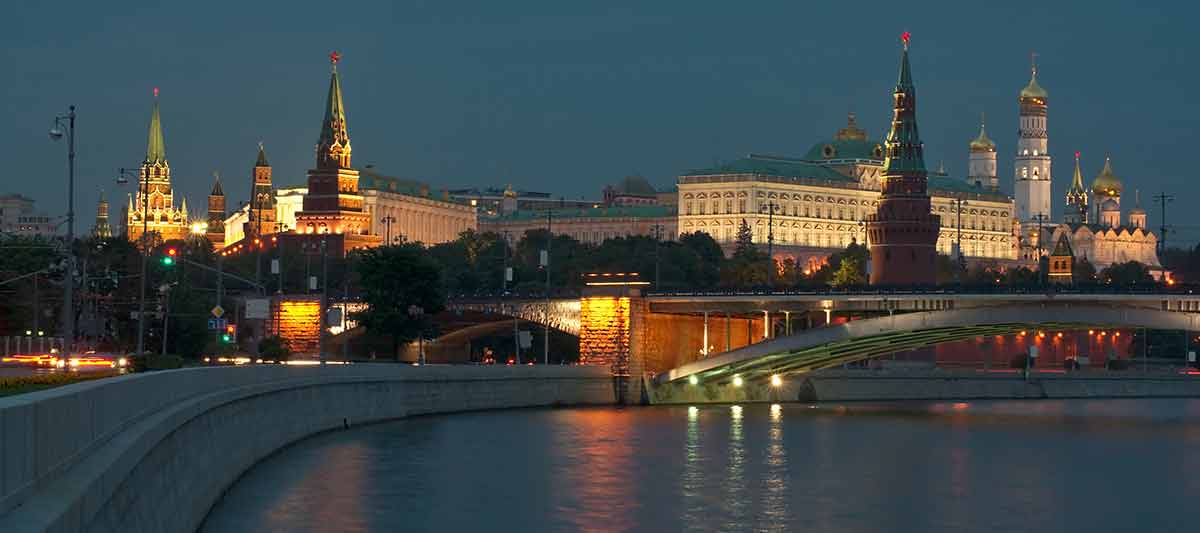
One of the most famous landmarks in Russia, the site of the Moscow Kremlin has been inhabited since the 2nd century.
Fortifications were built around the 11th century, and by the 1500s, the Russian Tsars had moved in after Ivan the Great chose it.
After the rise of the Soviet Union, it became the centre of the Russian government.
It’s still used by the government today, even though some sections are open to tourists.
There’s a treasure trove of museums and historical buildings to visit, including the Armoury Chamber, Assumption Cathedral, Archangel Cathedral and “Ivan the Great” Bell Tower Complex.
There’s a lot of history to learn, so join a guided tour to get a better understanding of this impressive place.
The Moscow Kremlin is at the meeting point of Ivanovskaya Ploshchad and Troitskaya Ulitsa, Moscow.
2- Grand Kremlin Palace
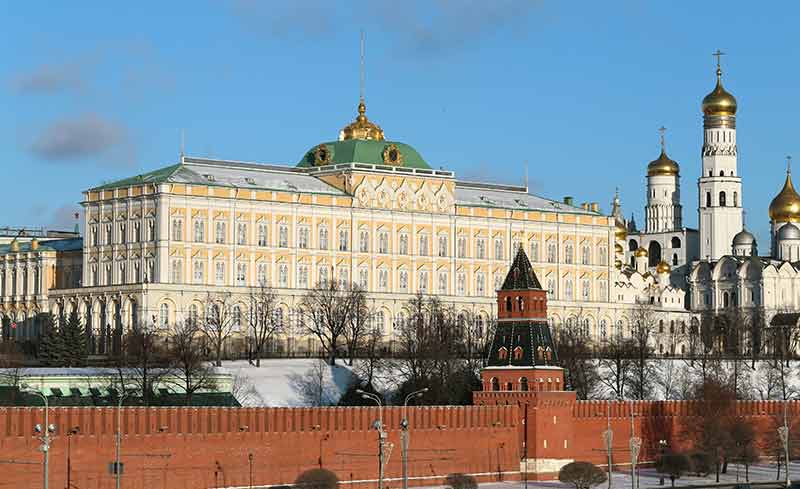
Housed within the Moscow Kremlin but worthy of being mentioned on its own is the Grand Kremlin Palace.
Built in the mid-1800s, it was initially the Moscow residence of the Tsars.
Today, the opulent halls are the official residence of the Russian president and where the inauguration takes place.
The only way to explore the palace is on a pre-booked tour, which takes visitors through the palace’s four ceremonial halls: St George, St Andrew, St Vladimir and St Aleksandr.
The Grand Kremlin Palace is in the Moscow Kremlin.
3- Petrovsky Palace
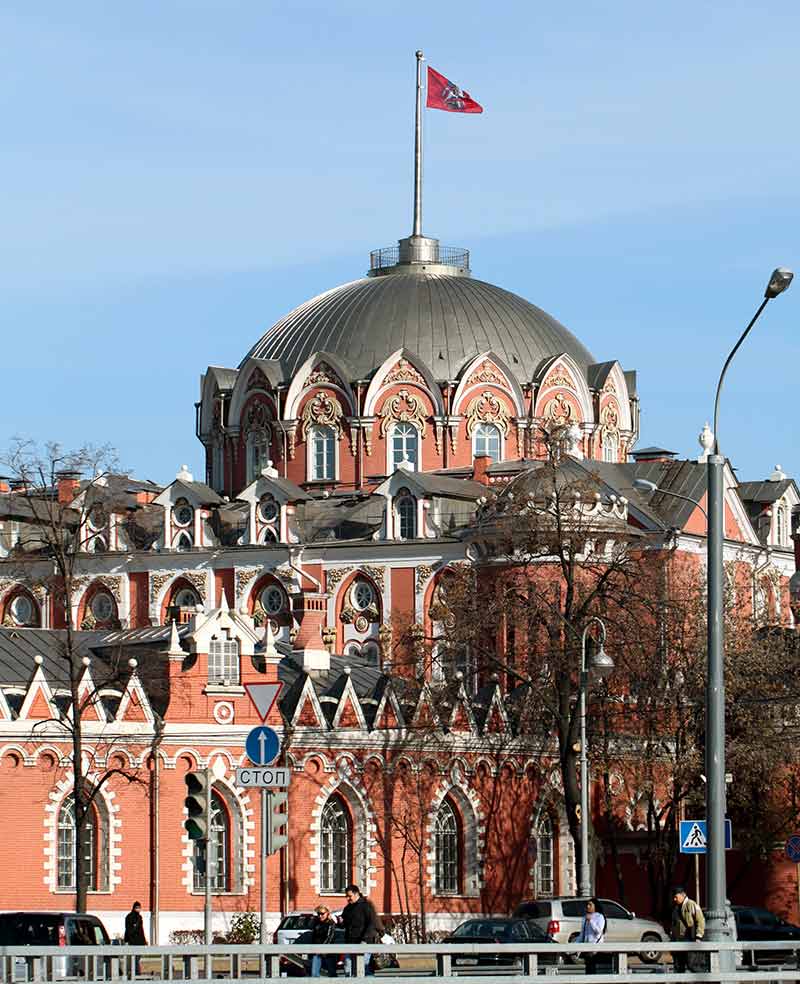
Petrovsky Palace was also built on the orders of Catherine the Great, but she only ever visited it once.
The intention was for the palace to be used as an overnight stop for royal travellers moving between St Petersburg and Moscow. And it was where Russian Tsars began their procession to the Moscow Kremlin for their coronations.
Another historical figure who stayed in the palace was Emperor Napoleon, who needed a safe place when the 1812 Moscow fire forced his invading army out of the city.
After the revolution, the Zhukovsky Air Force Academy occupied the palace.
Two famous students of the academy were cosmonauts Valentine Tereshkova and Yury Gagarin.
Today you can experience the luxurious lifestyle of the imperial residence by staying at the Petroff Palace Boutique Hotel.
Petrovsky Palace is at Leningradsky Ave, 40, Moscow.
Love castles? You’ll want to read about these:
Palaces in St Petersburg
4- Peterhof Palace
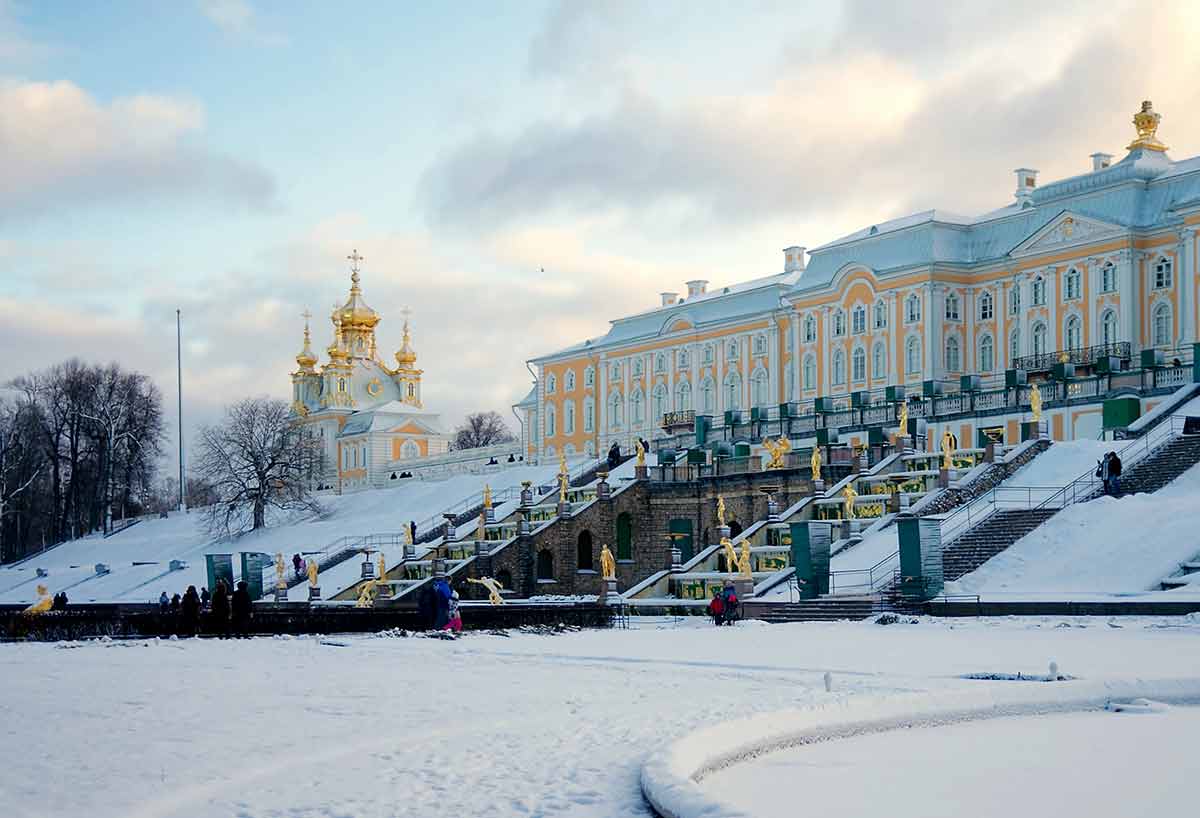
In 1714 construction started on the magnificent Peterhof Palace in the new city of Saint Petersburg.
Peter the Great was personally involved in designing it as his dream was to turn it into Russia’s version of the Palace of Versailles in France.
The palace and its terraced gardens, with gold fountains, are breathtakingly grand, making it one of the most impressive Russian palaces to tick off your bucket list.
The palace houses several museums, including The Special Treasury Museum, The Court Entertainments Exhibition and Museum of Art Collectors.
Due to its seaside location, it was also chosen to be the home of the Imperial Yachts Museum.
Peterhof Palace is at Razvodnaya Ulitsa, 2, St Petersburg.
5- Catherine Palace
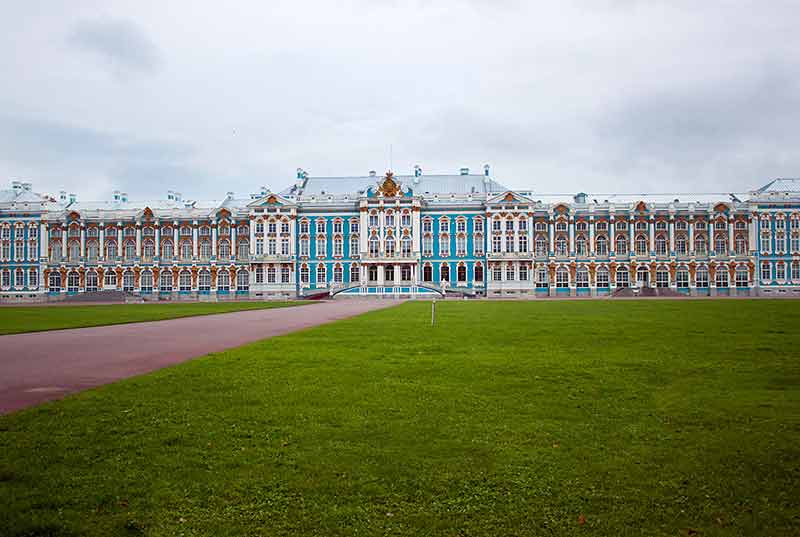
The opulent Catherine Palace is to the south of Saint Petersburg and is another palace you should not miss.
In 1710, Peter the Great gifted the land to his wife, Catherine I, and the original palace was built a few years later.
Catherine I passed on the estate to her daughter, Empress Elizabeth of Russia, who expanded the building to over 300 m long.
Strong women continued to take possession of the palace, with the final major works occurring during the reign of Catherine the Great, the last Empress of Russia.
Visitors to the palace can choose to tour the gorgeous interior rooms, manicured exterior gardens, or a combination of both. Highlights are the Great Hall and the Amber Room.
Catherine Palace is at Garden St, 7, St Petersburg.
6- Winter Palace
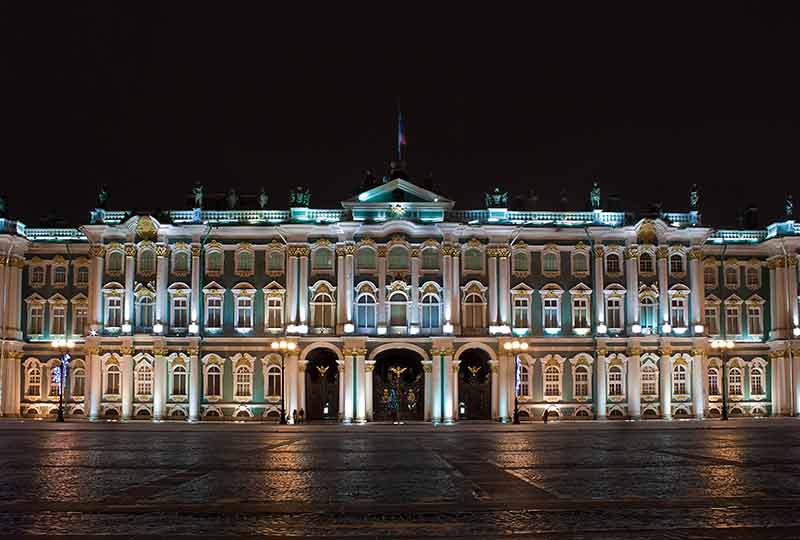
The Winter Palace is another highlight of Saint Petersburg because of its stunning architecture and the Hermitage Museum.
The current building is the fourth version of the Winter Palace at the site. Peter I built the first palace in 1708 and the second in 1721.
His son, Peter II, enlarged the palace in 1728 while three empresses, Empress Anna, Empress Elizabeth and then Catherine the Great, continued its construction.
The Winter Palace houses the Hermitage Museum, one of the most significant art museums in the world, featuring artworks from Ancient Egypt, Ancient Greece, Russia, the Italian Renaissance, and the Dutch Golden Age.
There are works from most of the masters, including Van Gogh, Monet, Rembrandt, Rubens, Da Vinci, Matisse and Picasso.
Some galleries can only be visited as part of a tour.
The Winter Palace is at Palace Embankment, 32, St Petersburg.
7- Saint Michael’s Castle
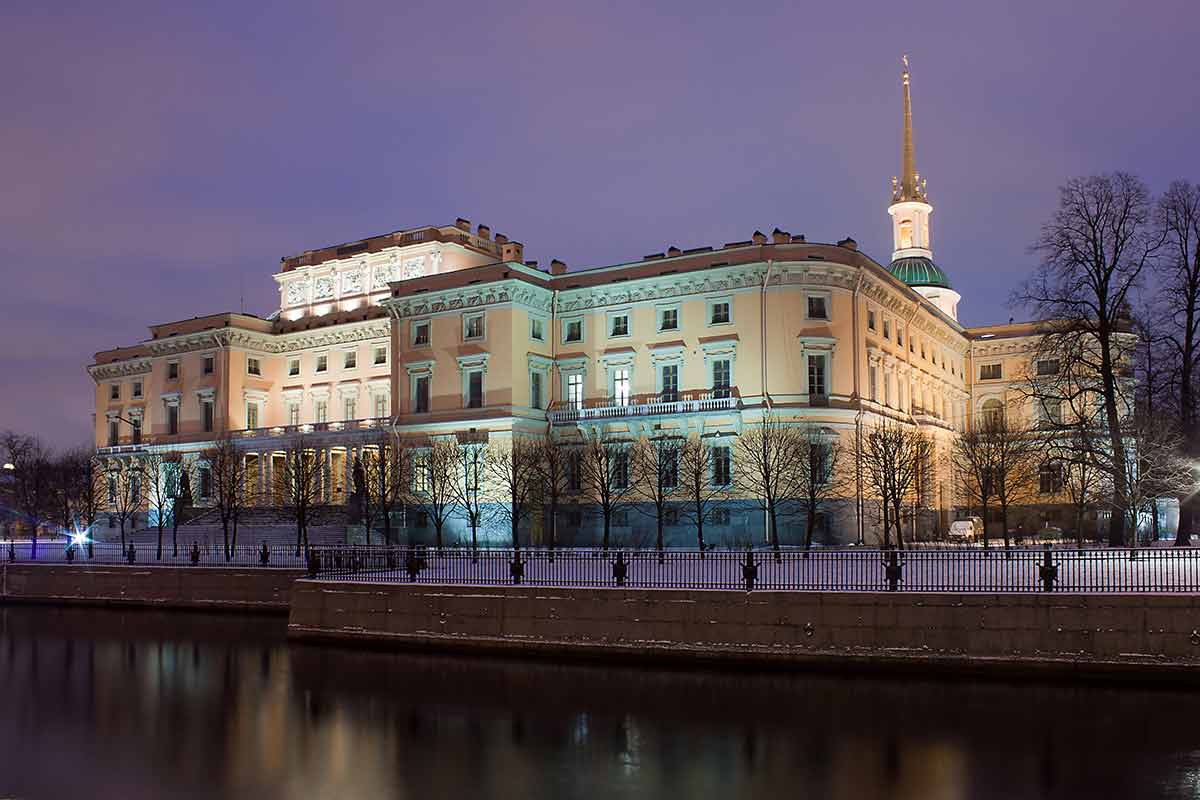
In 1797, Emperor Paul I of Russia had Saint Michael’s Castle built in St Petersburg as his new royal residence because he felt unsafe at the Winter Palace.
He feared someone would assassinate him there, and those fears turned out to be well-founded as he was murdered in his bedroom 40 days after moving into Saint Michael’s Castle.
After that, the royal family moved back to the Winter Palace, and the castle became an engineering school before recently being turned into a museum.
The museum’s highlight is the portrait gallery, which depicts influential people throughout Russian history and scenes of St Petersburg’s high society during the Romanov era.
Saint Michael’s Castle is at Sadovaya St, 2, St Petersburg.
8- Alexander Palace
Alexander Palace was another imperial residence that Catherine the Great built.
She chose to build it near one of her residences, the Catherine Palace, for her favourite grandson, Alexander I of Russia.
Their relationship was strained at times, as Catherine had grand ambitions for Alexander, who she wanted to be her heir over her own son.
The palace remained in the imperial family’s possession until the last of the Romanovs, Nicholas II and his family.
The royals used it as their primary residence and were held under house arrest in this palace until their exile to Siberia.
After their exile, the palace became a museum and was severely damaged during its time as a Nazi headquarters and a workspace for the Soviet Navy.
In 1997 the government returned it to being a museum dedicated to the last of the Romanovs.
The museum is improved every year, with the grounds and exhibits being open to visitors.
Alexander Palace is at ul. Dvortsovaya, 2, St Petersburg.
9- Marble Palace
Like Gatchina Palace, The Marble Palace was built for Count Grigori Grigoryevich Orlov when he was in favour with Catherine the Great.
It’s named after the impressive amount of marble used in the palace’s construction, a total of 32 different types.
The final touches to the palace were not finished until two years after the Count died, at which point Catherine the Great repurchased it from Orlov’s heirs and gave it to one of her grandsons.
After the revolution, it housed the Academy of the History of Material Culture, then the Lenin Museum before finally becoming part of the State Russian Museum.
They renovated it and turned it into a modern art museum.
The Marble Palace is at Millionnaya St, 5/1, St Petersburg.
10- Peter and Paul Fortress
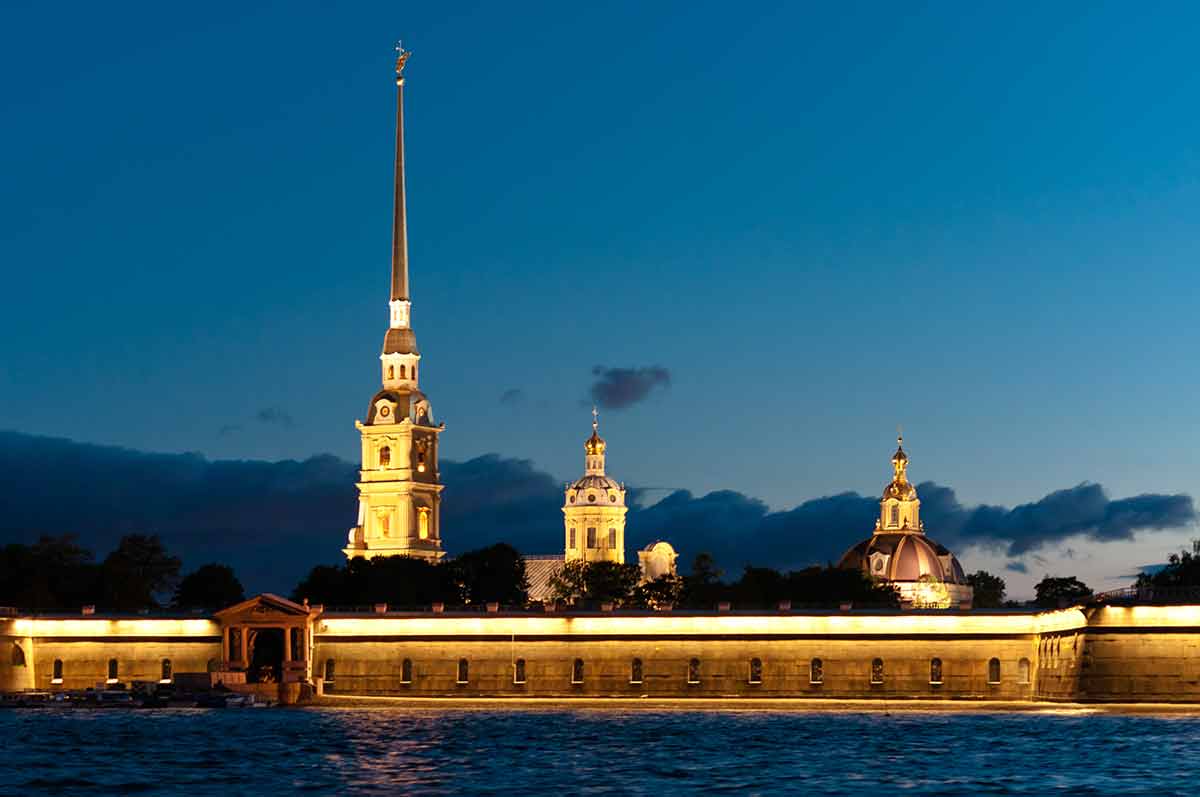
Peter the Great founded Saint Petersburg in 1703 as a major seaport and eventual capital city of the Russian Empire.
The first stone building constructed in the new city was also named Saint Petersburg but is now known as the Peter and Paul Fortress.
You can visit the Peter and Paul Cathedral, the first cathedral in St Petersburg and a burial place for the Romanov Dynasty.
There are exhibitions about the Trubetskoy Bastion Prison, daily life in Saint Petersburg (1703-1918), the history of the fortress and the history of Russian space exploration.
Tours are available, and at certain times, you can also watch the Changing of the Guard and hear the cannon firing a shot from the Naryshkin Bastion at noon each day.
Peter and Paul Fortress is on the Neva River, accessible via Kronverkskiy Bridge or Ioannovskiy Bridge, St Petersburg.
11- Nikolaevsky Palace
Nikolaevsky Palace was one of many palaces built in the 1800s for the children of Nicholas I of Russia, in this case for his third son, who was also named Nicholas.
After both men died, the palace housed the Xenia Alexandrovna Women’s Institute and then the trade unions.
Today, parts of it are used for commercial purposes, but there is also a restaurant and the “Feel Yourself Russian!” folklore show.
The show incorporates Russian folk songs and music and performances by Russian folk ballet dancers and Peters Quartet.
It’s an excellent show to immerse yourself in Russian culture and heritage.
Nikolaevsky Palace is at Ploshchad’ Truda, 4, St Petersburg.
12- Yusupov Palace
Owned by the wealthy Yusupov family, this Russian palace is infamous for being where Grigori Rasputin was assassinated.
A group of Russian nobles led by Prince Felix Yusupov despised Rasputin’s influence over the Russian royals, especially Empress Alexandra Feodorovna.
Yusupov invited Rasputin to the palace and was involved in killing him.
During the Russian Revolution, the Yusupov family fled Russia, and the state seized the palace.
Today, the palace theatre hosts classical concerts and theatre performances.
There’s a museum on the ground floor and a special exhibition about the life and death of Rasputin.
Yusupov Palace is at Embankment Riv Moyka, 94, St Petersburg.
Also read:
- Things To Do In Moscow
- Russian River Cruises
- Cruising From Moscow To St Petersburg
- 20 Russian Landmarks
- 20 Russian Palaces and Forts
Other Russian Palaces
13- Kazan Kremlin
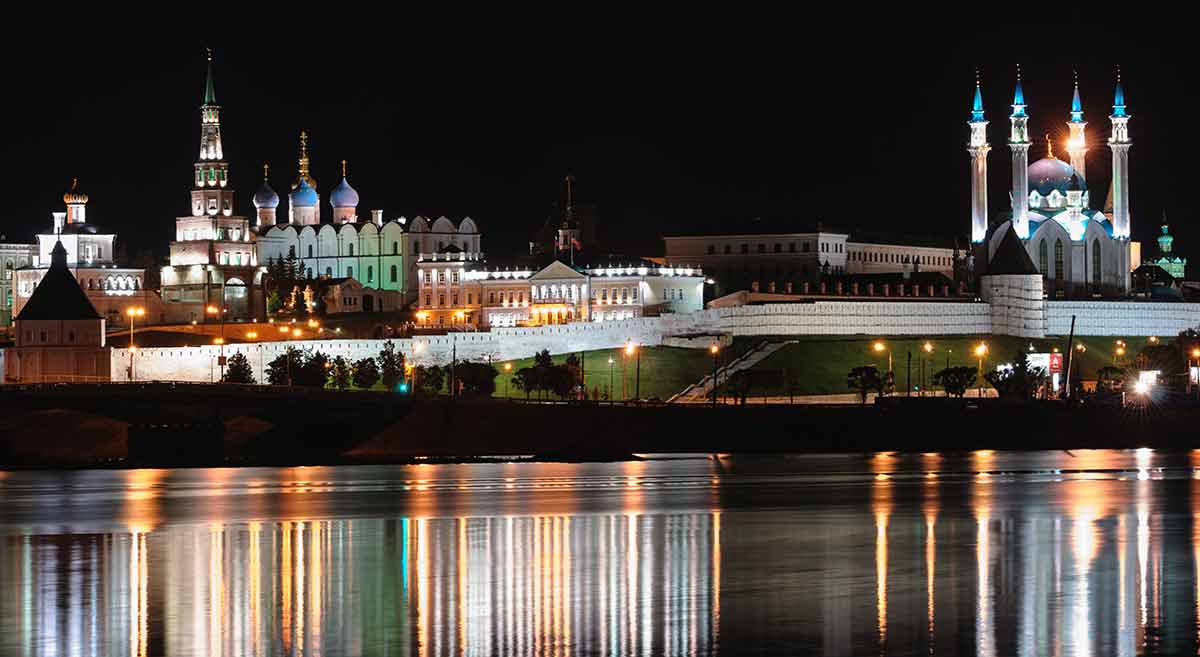
The Kazan Kremlin has a history dating back to the 11th century when the original Tartar fortress was built.
In the 15th century, Ivan the Terrible conquered it and ordered his people to transform it into the Christian See of the Volga Land and East.
There are many interesting buildings to explore at the Kazan Kremlin, notably the Annunciation Cathedral and Kul Sharif Mosque, which represent two of the world’s largest faiths.
You can also visit the Suyumbike tower, Tatarstan Museum of Natural History, market stalls and an observation deck.
Next door is the National Museum of the Republic Tatarstan.
The Kazan Kremlin is on Ulitsa Sheynkmana, Kazan.
14- Astrakhan Kremlin
An impenetrable fortress, the Astrakhan Kremlin stood guard over the Volga Delta for hundreds of years.
The construction of a wooden fortress started in 1587, and it was later rebuilt in stone, serving as a military fort until after WWII.
In 1974 it officially became a museum.
You can learn about what life was like for the soldiers during the 19th-century and see beautiful city views from the fortress walls.
There are also elegant churches to explore, including the Assumption Cathedral and 18th-Century Bishop’s House.
The Astrakhan Kremlin is at Ulitsa V. Trediakovskogo, 2, Astrakhan.
15- Vyborg Castle
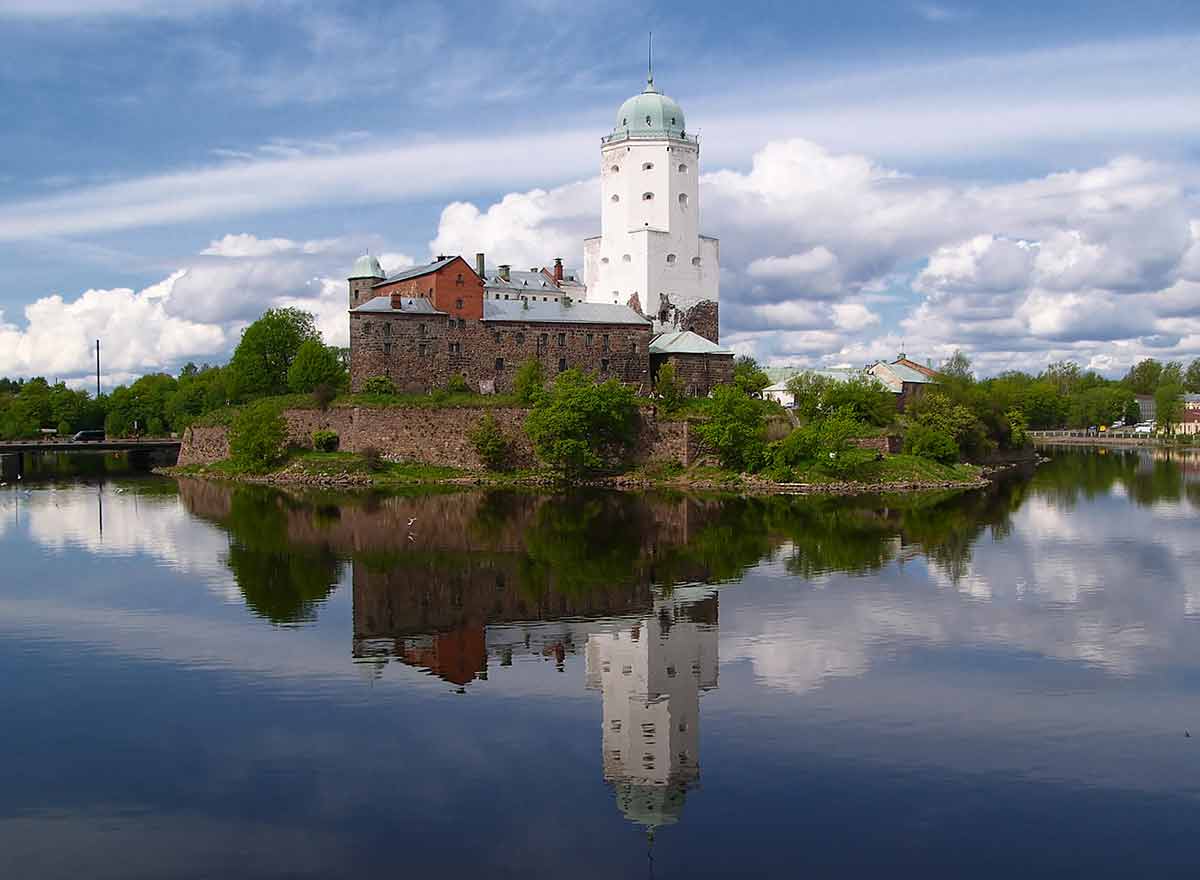
Vyborg Castle is unusual among Russian castles and palaces because its heritage is Swedish.
The Swedes built the castle in the 1290s to continue their control of the area, which was a meeting point of popular trading routes.
As the Russian border moved further away, the castle was left to fall apart, but its fate changed in 1710 when the Russians retook Viborg.
For almost 200 years, ownership bounced back and forth between Russia and Finland before being annexed in 1944, after WWII.
Today the castle houses a museum that explains its history during times of Swedish, Finnish and Russian ownership.
There are hands-on displays in the Torture Chamber and Knight’s Hall and an exhibit with historic items salvaged from Vyborg Bay’s depths.
Vyborg Castle is in the Vyborg Bay, Vyborg.
16- Vorontsovsky Palace
Located between the Crimean coastline and Mt Ay-Ptri is Vorontsovsky Palace.
Mikhail Semyonovich Vorontsov, a Russian prince, wanted a luxurious summer residence in the area, so he had the palace built during the mid-1800s.
The style of Vorontsovsky Palace is unique, as it was inspired by the time the prince spent in England and is a hodgepodge of architectural styles.
Today, visitors can explore the gardens, walkways and courtyards around the palace and gaze up at the unique buildings.
Try to spot the lion statues, which Winston Churchill jokingly said looked like him. You’ll need to book a tour o see the inside of the palace.
Vorontsovsky Palace is at Dvortsove Hwy, 18, Alupka.
17- Ivangorod Fortress
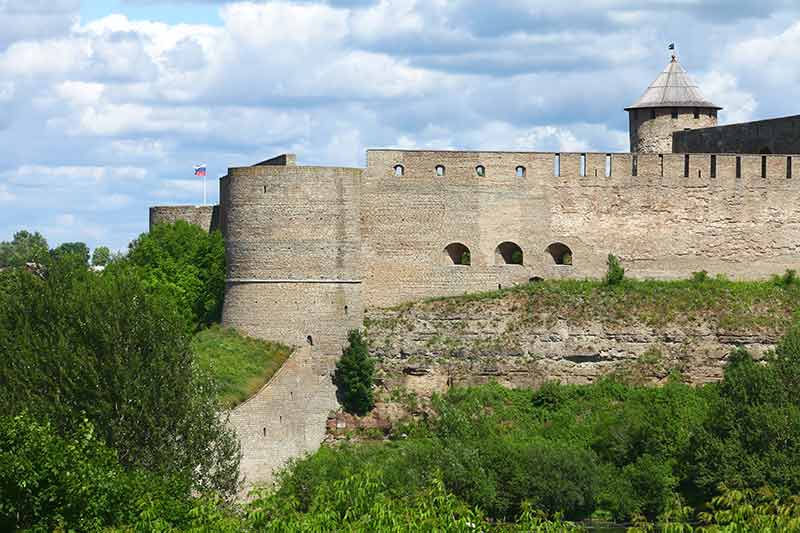
Ivangorod Fortress was named after Ivan III, who ordered the construction of the enormous building on the Narva River.
While it was initially just a fortress, more people started to move into the area, eventually creating the town of Ivangorod.
During its 500-year history, Ivangorod Fortress has been under the control of both Russia and Sweden, but after World War II, it permanently returned to the Russian government.
Today the fortress houses a history and art museum.
There are permanent exhibits about the Northern War and Livonian War, archeological finds from the local area and letters from famous visitors.
Ivangorod Fortress is at Kingiseppskoye Shosse, 6, Ivangorod.
18- Gatchina Palace
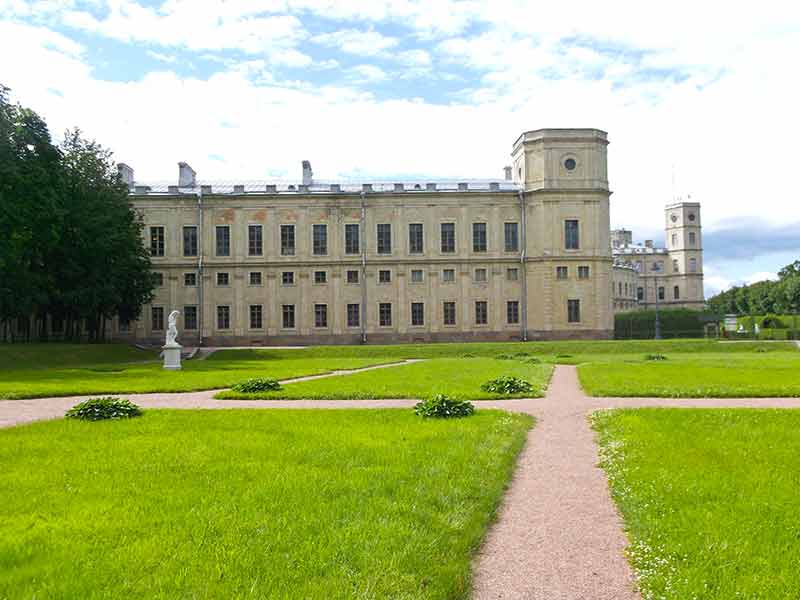
The construction of Gatchina Palace took from 1766 to 1781 for Count Grigori Grigoryevich Orlov.
During the years it took for the palace to be completed, the Count went from being a lover and favourite of Catherine the Great to being superseded by younger men.
After his death, the palace eventually passed to the Russian Imperial family, who regularly used it during the 19th century.
Since the Russian Revolution, it has been a museum where you can see rooms used by Russian royalty, including Nicholas I and Alexander III.
There is also a permanent exhibit of antique firearms and weapons from the 16th-19th century, which is the best in Russia.
Gatchina Palace is at Krasnoarmeyskiy Prospekt, 1, Gatchina.
19- Novgorod Kremlin
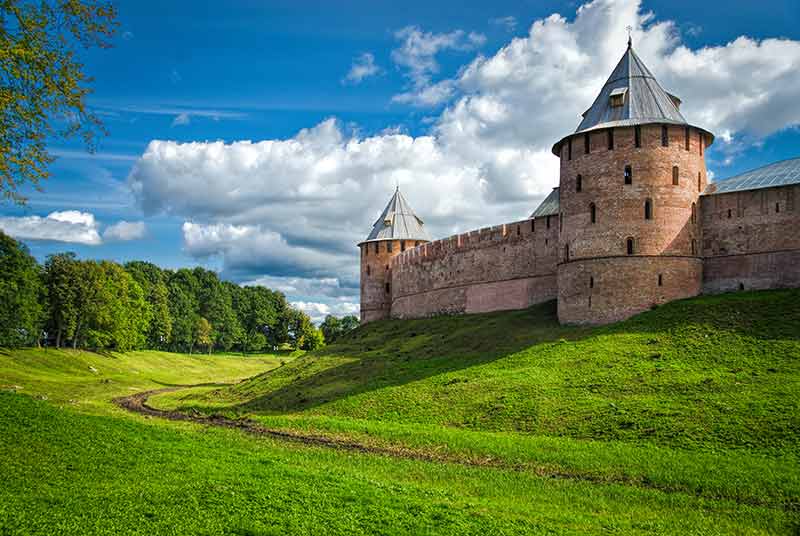
Originally a pagan burial ground, the first building at the Novgorod Kremlin site was a Russian Orthodox church that Bishop Ioakim Korsunianin had built in 989.
Named the Holy Wisdom of God, the wooden church was replaced in 1050 by a stone church called The Cathedral of St Sophia.
That cathedral is still in use today and is the oldest in Russia.
The fortifications were added in different stages between 1044 and 1490.
Today you can walk along the Volkhov River and take in the impressive red brick towers and fortress walls.
Aside from the cathedral, visitors to the Novgorod Kremlin can also explore the museums, guided walking tours, Nikolsky Cathedral, Alekseevskaya tower and the Vladyka Chamber.
Novgorod Kremlin is on the banks of the Volkhov River north of Lake Ilmen, Veliky Novgorod.
20- Vologda Kremlin
In the heart of Vologda, the construction of the city’s Kremlin began in 1565 on the orders of Ivan the Terrible.
Under his rule, the city had become an important transit centre for traders, and he felt strongly about the need for a new fortress.
He even travelled to the city himself to personally oversee the foundation of the fortress.
Today you can explore the Kremlin grounds and climb to the top of the bell tower to enjoy panoramic views of the city.
There are also a few museums and historical churches to see. Next to the Kremlin, there is a park with play equipment and a lake.
Vologda Kremlin is at Ulitsa Sergeya Orlova, 15, Vologda.
Plan Your Trip

Rent A Car – Find the best car rental rates at Discover Cars. They compare car hire companies to provide you with the best deal right now.

Find A Hotel – If you’re curious about this article and are looking for somewhere to stay, take a look at these amazing hotels.

